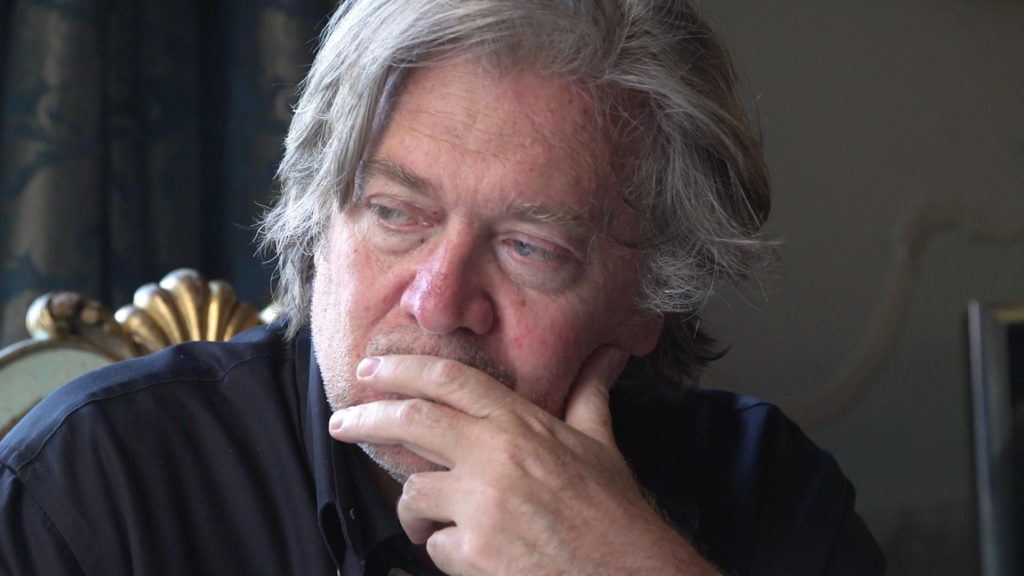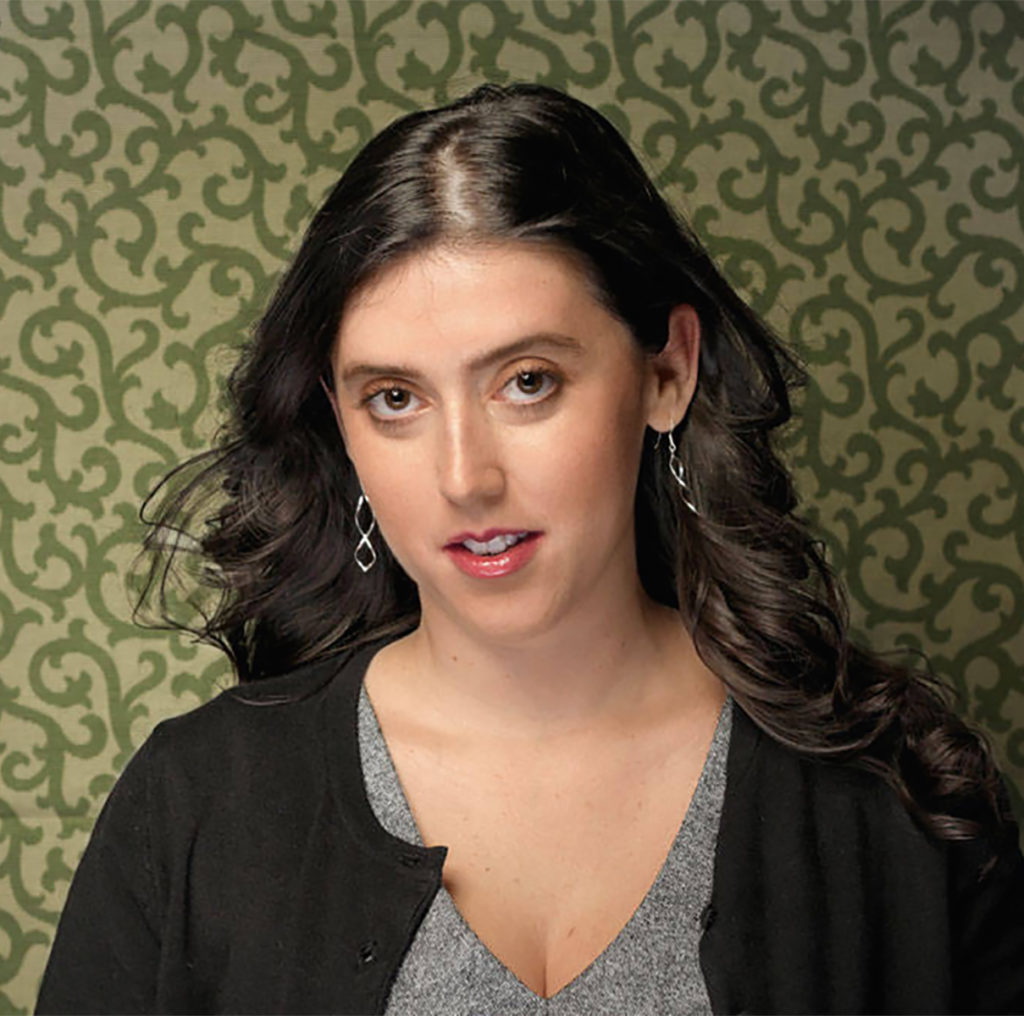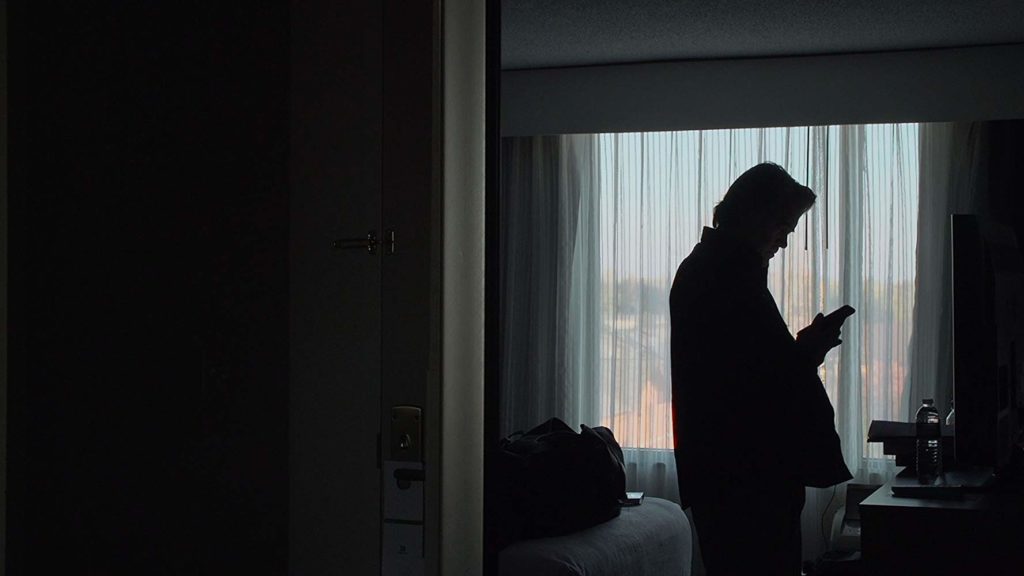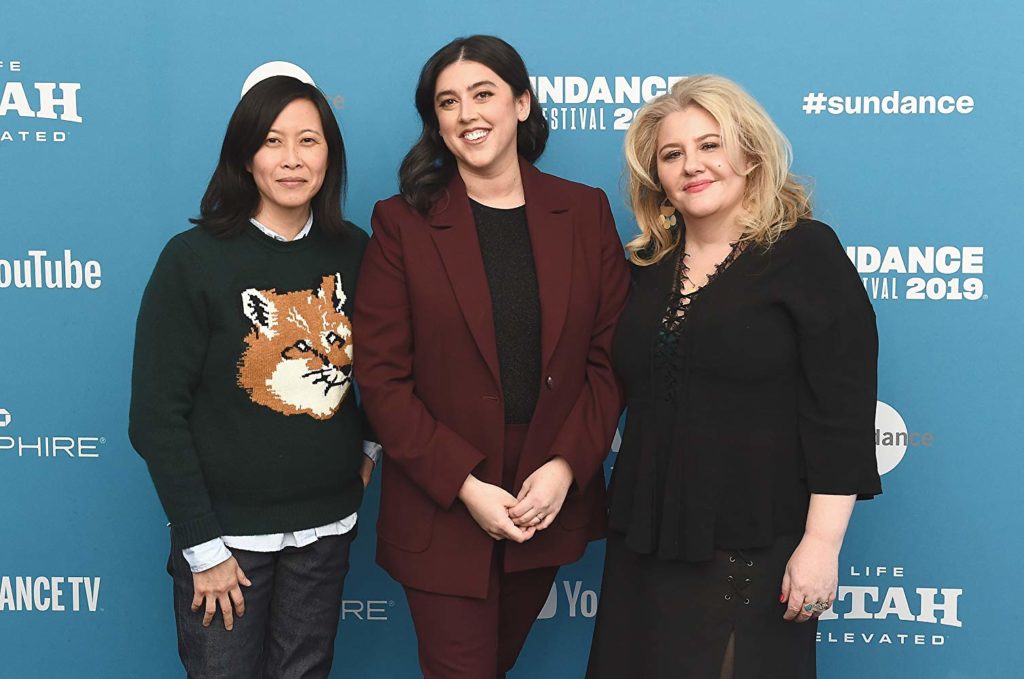Premiering at Sundance Film Festival earlier this year, The Brink sees director Alison Klayman shadow the former White House Chief Strategist, Steve Bannon, from autumn 2017 (shortly after his employment at the White House terminated, and a few prior to Trump disavowing him with his infamous ‘Sloppy Steve’ tweet) until after the 2018 US midterm elections. In an all-access, verité-style documentary, Klayman’s documentary chronicles Bannon’s mission to enable the global spread of alt-right nationalism.
I had the opportunity to sit down with Klayman ahead of The Brink’s Sundance London premiere, to discuss the film’s roots, her experience making it and her retrospective thoughts on the documentary’s subject.

The Brink has a perhaps unorthodox origin story, as Klayman explains. “My producer, this woman named Marie Therese Guirgis, knew Bannon from about fifteen years ago, in the early-2000s. He’d put together a group of investors that bought an arthouse distribution company – this was in his wannabe Hollywood days – and he became her direct boss for three years. So she knew him from that time and they had a good working relationship, until the company folded and they lost touch. Then when he emerged on the national stage as the CEO of the Trump campaign, she was frankly horrified [laughs]. And she got back in touch with him basically to say, ‘Don’t do this. I’m completely disappointed,’ kinda to rage-text him.”
A bold approach, certainly. However, “when I first met him with her, the way they spoke you could tell they just had an existing relationship. She said things I would not have said, just because I was like ‘Dude, we’ve got to get him to agree to do this!’ So long story short, her interventions had no impact on his life choices, but that reconnection lead to her thinking like, ‘I bet I can convince him to do a documentary.’
“And what we’ve talked about a lot now is just this feeling at the time that the one-dimensional depiction of him in the media as Darth Vader, or this genius behind the scenes, she felt like it was all missing the mark. And even the evil depiction was a very powerful imagery that was probably something he was loving. She felt that a real look at him would be beneficial, and it was always envisioned as a verité-style film. So, she asked him, and he said no several times, because he was still in the White House.
“Eventually he said yes, and then she called me and she was like, ‘Bannon is agreeing, would you direct it?’ And I was – maybe surprisingly, maybe not – I was on board. I mean, I wasn’t sitting around thinking about Bannon a lot and wanting to make a movie about him, but the opportunity presented itself. You know, we would only agree to it if we got true access, and the opportunity felt like a chance to go behind the scenes on the other side, and to see what their strategies are, who supports them, what they’re doing next. That’s what I was interested in. So then, I of course said that I had to meet him, because I had no idea what he was like as a person, and whether I could stand it…”
“For a whole year!” I can’t help but interrupt.
Klayman laughs, “Yeah, and honestly when I met him, from the moment he opened his mouth, I was like ‘Okay, he’s going to be a really good character,’ because well, you can see why that is in the film, right? That’s how that all came about. And obviously getting him to say yes initially was not an easy… it was a daily negotiation of access, and it also took a long time before he signed the release, and there was a lot that needed to happen from that initial meeting going forward, but I met him in September 2017 and in October I started filming.”

Why on earth would Bannon sign on to this project? That was the question that burned at the back of my mind throughout the documentary viewing. Klayman’s personal politics certainly did not align with his own, and she clearly was not there to make a propaganda film about him. So why risk it?
“Well I think… and of course I can give you what I think, since he would be the only one who could answer that, and he’s not really speaking about the film,” she laughs. It’s true that Bannon has been noticeably silent about the film’s release, perhaps unsurprisingly. “But, you know, it’s vanity. The way it was pitched to him, the way my producers presented it was wholly leaning into his ego. And there’s the understanding that he is someone who cares about his culture, so the idea that it’s a prestigious film – I mean, Errol Morris approached him several months after, but I was first!” The subject of Morris’ American Dharma is touched upon in The Brink, as it sees Bannon travelling to Venice for the film’s festival premiere – though Bannon did not end up attending the red carpet, choosing to evade the press. Morris’ film was criticised by many (including the The New Yorker and Variety) for being too soft on the subject.
“So he didn’t yet know that Errol Morris was going to come along,” Klayman continues, “but the idea that there was going to be a documentary film made was kind of flattering, and I think that he’s also someone with hubris, who believed that he would come out on top. Sort of the ‘all press is good press’ but, you know, I think he regrets it now. I think that the entire year that I filmed was kind of an extended branding exercise for both his quote-unquote ‘ideas’, and for himself. This is him leaving the White House and being at this point where being associated with Trump gave him the most power, fame and notoriety that he’d ever had in his life, and he was going to try to figure out how to extend it.
“And I think that having a documentary made about you certainly solidifies his position as an important person; I came to learn that he thinks of history as a great-man version of history, and I think he definitely thinks he’s one of those great men.” Such is greatly noticeable in The Brink where Bannon is, in multiple scenes, filmed surrounded by his history books. “So I think that’s why he did it. We were very upfront, he knew what my producer’s politics were, and I was introduced to him as like, ‘This is Alison, she’s Jewish, her grandparents are Holocaust survivors, she went to Brown University,’ – which, you know, deserved or not, signifies a certain lefty politics. So he would joke with me calling me a commie, you know, lefty filmmaker over here.
“But in truth, he really didn’t ask me a lot about myself, which of course wasn’t the goal. I do think he thought I was smart, and he did treat me with respect, in a very professional relationship, and he came to enjoy having me around; but my hope was that he was underestimating me. That was my daily mantra. Let him underestimate me, and let me never underestimate him. I really feel like I was observing someone who was very strategic when it came to communication, but he still has a lot of vulnerabilities and weak spots. Nobody can be on point 24-hours a day, and if you let someone film you around the clock… Also, the creative control was entirely in my hands, you know? I can film what he wants me to film, for 250 hours, but then there’s 90 minutes in there that are the movie that I want to make.”

“A year’s worth of footage must involve an incredible amount of time spent editing,” I say.
“I’m so happy because the movie is exactly how I wanted it to be, but we did it very, very fast,” she replies. “I worked with two editors, and once I stopped shooting I kind of jumped in as the third editor, because I just knew my footage so well. And we really wanted it to come out in as timely an effect as possible, and honestly before the EU elections was very important for us. Obviously here in the UK it’s coming out after, but we released it in Spain, Italy, and Scandinavia before the elections, so that was good. I had such a clarity of purpose with the film that that enabled us. There were a lot of challenges with this type of movie in how to edit, because you don’t want to inadvertently assist his cause, and that was the kind of thing that kept me up every night…
“Filming is one thing, but how you put it together and how you bring it out into the world, and with the verité style, also means that it’s about letting the audience draw conclusions. And that obviously comes from having a highly edited piece, but I’m not going to have a reporter-style interview after every cut explaining what’s happening. I did a lot of thinking about how, with verité footage, we can show hypocrisies, show that he’s lying. So when I was going into it, I knew we were going to use verité devices, so repetition, juxtaposition. And in the end, I think it came out that way. I feel like the movie has a point of view while also being very fair; it’s edited but it’s still just presenting the facts.”
“Do you think that not voicing your own opinions, for instance in a Michael Moore-esque style, means that the film has greater potential to attract audiences from across the political spectrum?” I inquire.
“I still think that it’s a film that seems to be seen, so far, a lot by the left and centre, even if I have received some angry mail from people from the right,” Klayman responds. With regards to the verité style, “I think it does make it more watchable. But I don’t know if that means more politically diverse people are coming to see it, because I think that these days our media appetites are culturally and politically-driven, and this is a movie that is not pro-Republican or pro-right, so they might still ignore it. What I think though, is that it makes the critique stronger, and it’s the kind of movie I feel comfortable doing and standing behind; it’s sort of like getting the receipts, the proof is in the footage.”
Despite the fly-on-the-wall approach, it’s undeniable that Klayman’s influence is felt throughout the documentary. You may only hear her voice once or twice during the runtime, but her point of view is still clear. “I can only make a movie from my vantage point, and that was important to me too, to feel like it was a movie that only I could have made. ‘Why is this my movie and not any other filmmakers?’ And I feel like the inclusion of certain scenes related to China, certain things that I spot as a woman… I don’t know if the whole ‘rose between two thorns’ bit would have happened otherwise,” she ponders, referring to a repetition of moments in which Bannon poses for photos with supporters, always insisting the woman stands in the middle, as he jokes “a rose between two thorns!”.

There is an element of humour in The Brink that contributes to the feeling of unease. “I had worked with two editors, one was a man and the other a woman, and I told them there is going to be a lot of humour in this, but you’re not going to be laughing at the end. The seriousness was still coming through. And Brian [Goetz] loves comedy, so he got the ‘rose between two thorns’, but I also wondered is that something, if it was a different director filming in their field, that they would pick up on in the moment? I tried to make it something that was also my statement.”
Another moment of the film felt like it would be very personal to Klayman, a scene which became the opening sequence. In it, Bannon goes on a tirade about Nazi concentration camps, unsettlingly awed by the incredible ‘German engineering’ of the camps, as he describes his vision of a group of engineers sat around a table, drinking coffee, discussing plans to build these sites. As the granddaughter of Holocaust survivors, one can only imagine how Klayman must have felt listening to Bannon’s monologue.
“When he said that, it was about ten months into filming, so I already knew him pretty well at that point. The way I experienced that story as he starts to tell it, I was like, ‘Where is he going with this?’” She agrees, “Yeah, it was so unsettling. And that’s how I experienced it when it happened. So when that was shot, I knew that had to be the beginning of my movie. The editors came on board when we first met, and they wanted to know how I wanted to open the movie, and I was like, ‘This piece of tape.’ And I showed them, and obviously we had to trim it down a little, which was also tough because I wanted to be as transparent as possible. I feel like with this film had to be more transparent than other films about where you’re cutting, and letting there be naked cuts so people know you’re not trying to hide anything.
“When he talks… the glee with which he talks about the organisation, and the German engineering, it’s so unsettling, and it’s very him. Even the way he gets down to the description and says, ‘They separated themselves from the moral horror of it’, I feel like he found the words to describe what I think is so disturbing, and also what’s dangerous about himself. And I think he knew he was being provocative in speaking to me this way, but I also think in the moment he didn’t think there was anything wrong with what he was saying. Because he’s not saying ‘Yay, the Holocaust’ or ‘people should die!’, but he lacks that… he seems like a very self-aware guy, who also has a total lack of self-awareness. And that was something that consistently surprised me throughout filming. I feel like that anecdote encompasses so much of him, and laying out the theme of the banality of evil, because that for me was also what I thought my footage was all about.”
This interview was edited and condensed.
The Brink releases in UK cinemas on July 12th, distributed by Dogwoof.
